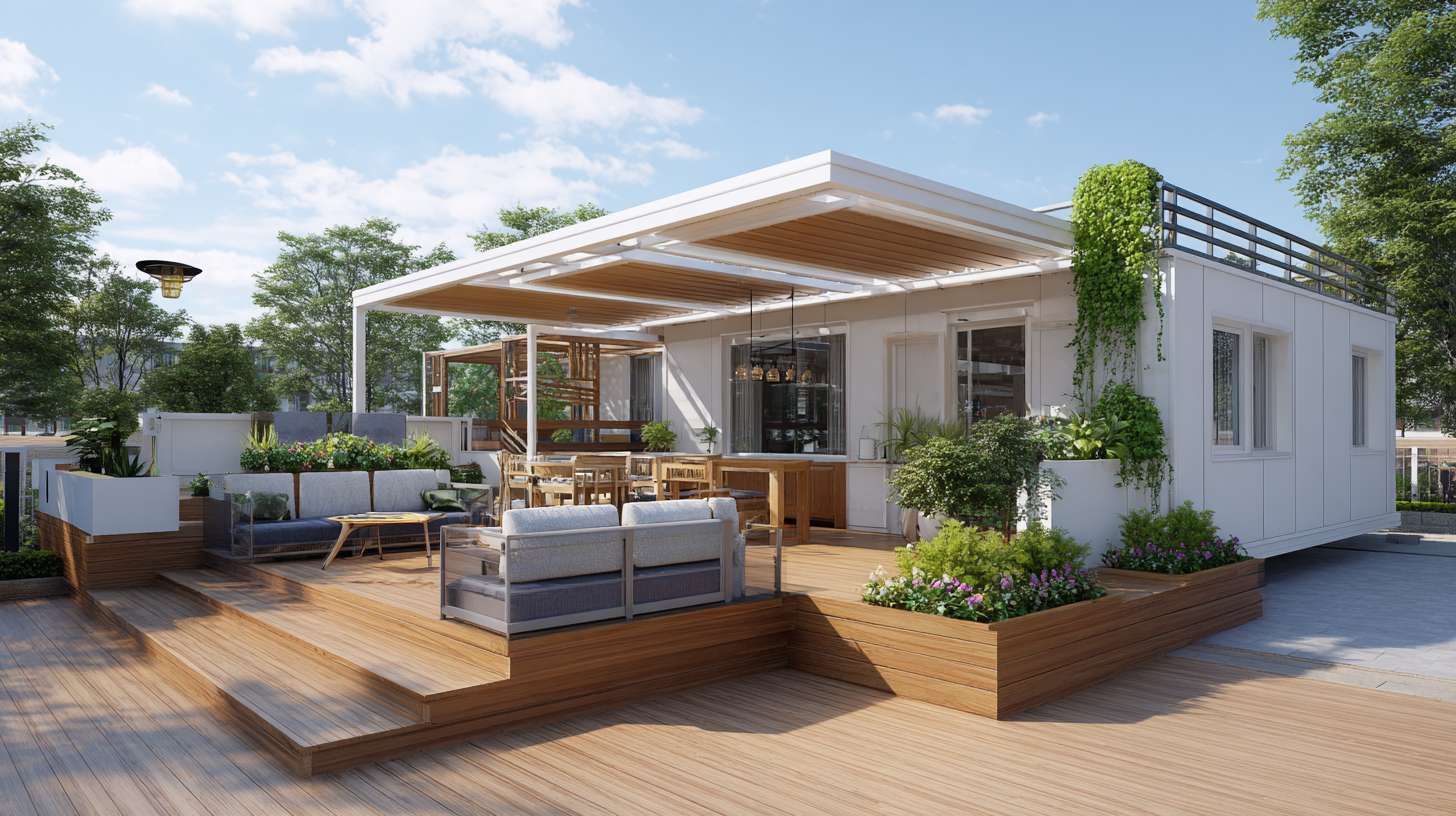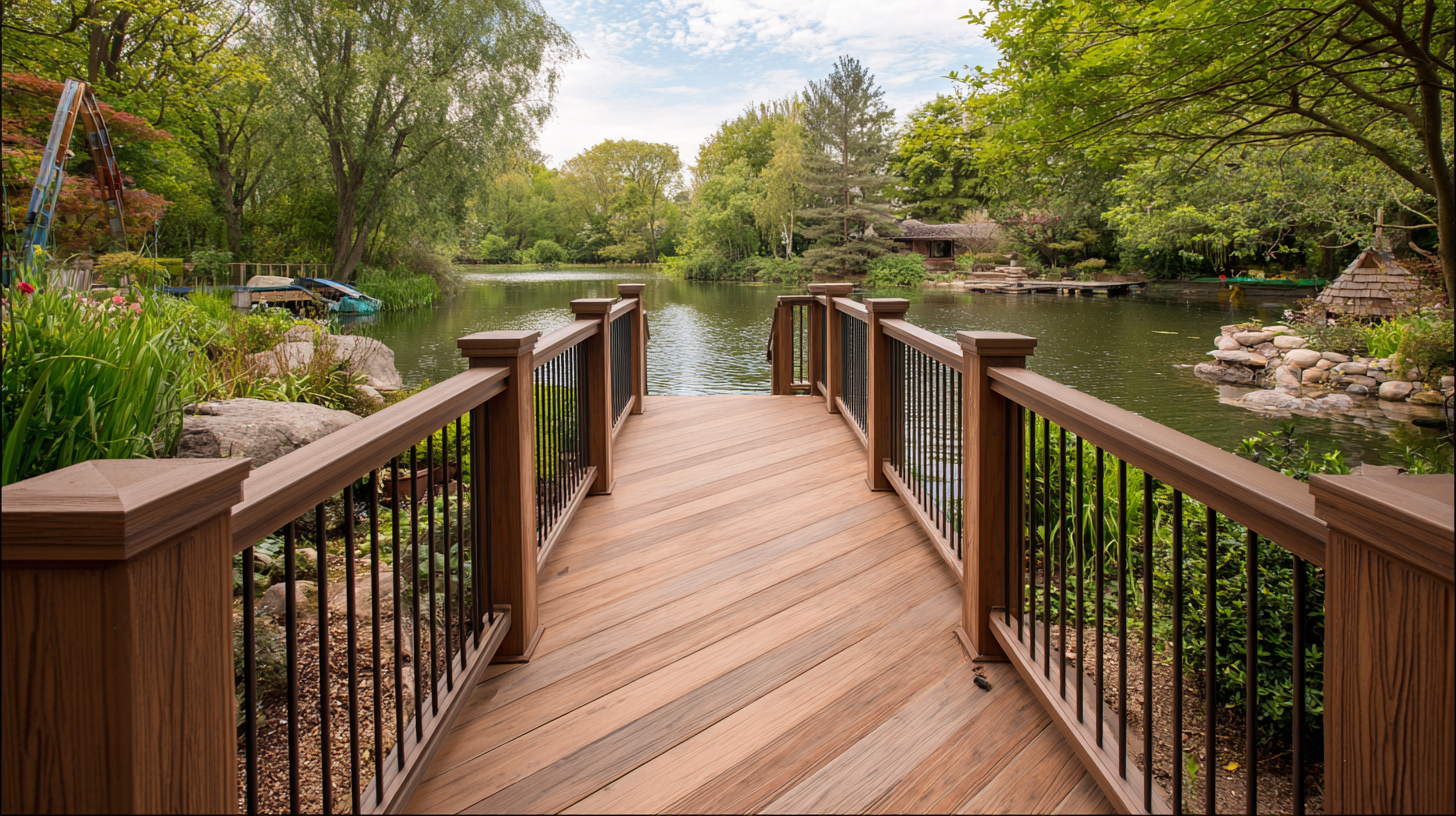Shandong Xiangying New Materials Technology Co., Ltd.
Shandong Xiangying New Materials Technology Co., Ltd.
In recent years, the demand for WPC (Wood Plastic Composite) outdoor solutions has surged, driven by the increasing need for sustainable and durable materials in outdoor living spaces. According to a report by MarketsandMarkets, the global WPC market is projected to reach $6.5 billion by 2027, growing at a CAGR of 12.1%. This rise is largely attributed to the numerous advantages that WPC outdoor products offer, including their resistance to moisture, decay, and UV damage, making them an ideal choice for patios, decks, and furniture.
 Furthermore, a study by Research and Markets highlights that consumers are increasingly favoring environmentally friendly options, as WPC is often made from recycled materials, thus minimizing the ecological footprint. As we delve into the technical specifications of the best WPC outdoor solutions, it becomes evident that these products not only meet aesthetic and functional needs but also align with contemporary sustainability goals.
Furthermore, a study by Research and Markets highlights that consumers are increasingly favoring environmentally friendly options, as WPC is often made from recycled materials, thus minimizing the ecological footprint. As we delve into the technical specifications of the best WPC outdoor solutions, it becomes evident that these products not only meet aesthetic and functional needs but also align with contemporary sustainability goals.
Wood Plastic Composites (WPC) are rapidly becoming the material of choice for outdoor solutions in modern landscaping. With the global market for WPC projected to reach a value of 6400.5 million by 2025 and an impressive growth rate forecasted to reach 12941.7 million by 2033, the demand for these innovative materials is clear. The compound annual growth rate (CAGR) of 9.2% signifies a robust interest in sustainable and durable solutions that cater to both aesthetic and functional needs in outdoor environments.
One of the key advantages of WPC outdoor solutions is their impressive resilience against the elements. Unlike traditional wood, WPC is engineered to withstand harsh weather conditions, minimizing issues related to rot, splintering, and fading over time. Additionally, WPC materials are designed to be environmentally friendly, combining recycled plastics and wood fibers, thus reducing waste and promoting sustainability. This dual benefit of durability and eco-friendliness positions WPC as a leading choice for homeowners and landscapers aiming for long-lasting and visually appealing outdoor spaces.
When it comes to outdoor solutions, durability and weather resistance are paramount. Wood-plastic composite (WPC) materials excel in these areas, outperforming traditional materials like wood and concrete. WPC combines the best of both worlds, offering the aesthetic appeal of wood while significantly enhancing longevity. Unlike traditional wood, WPC does not warp or splinter, making it a safer and more reliable choice for outdoor installations.
**Tip:** When selecting WPC products, look for options that have a high density and low moisture absorption rate. These features will ensure that your outdoor solutions can withstand the elements, including heavy rain and UV exposure, thereby maintaining their appearance and structural integrity over time.
Furthermore, WPC is resistant to insects and fungi, which are common threats to traditional wood. This natural resistance means that homeowners can enjoy their outdoor spaces without the constant worry of deterioration. By choosing WPC, you invest not just in a beautiful outdoor space but also in a material that is built to last.
**Tip:** Consider choosing WPC with a protective coating or surface treatment that enhances UV resistance. This can provide added protection against fading and preserve the rich colors of your outdoor decking or furniture for years to come.

 Wood-Plastic Composite (WPC) has emerged as a leading material for outdoor solutions, combining the best features of wood and plastic to create an eco-friendly alternative. One of the most significant advantages of WPC is its sustainable manufacturing process. Made from recycled wood fibers and plastics, WPC significantly reduces the consumption of virgin resources, minimizing its carbon footprint. This makes it an attractive option for environmentally conscious individuals and businesses looking to undertake outdoor projects without compromising on sustainability.
Wood-Plastic Composite (WPC) has emerged as a leading material for outdoor solutions, combining the best features of wood and plastic to create an eco-friendly alternative. One of the most significant advantages of WPC is its sustainable manufacturing process. Made from recycled wood fibers and plastics, WPC significantly reduces the consumption of virgin resources, minimizing its carbon footprint. This makes it an attractive option for environmentally conscious individuals and businesses looking to undertake outdoor projects without compromising on sustainability.
Moreover, WPC exhibits impressive durability and weather resistance, which translates to long-lasting outdoor solutions. Unlike traditional wood, WPC does not warp, crack, or splinter when exposed to the elements. This durability not only extends the lifespan of outdoor installations, such as decking, fencing, and furniture but also reduces the need for frequent replacements, further conserving materials and energy over time. By choosing WPC for outdoor projects, consumers are making a statement about their commitment to sustainable living while enjoying the benefits of a highly functional and appealing product.
In today's outdoor living landscape, design versatility is the cornerstone of creating inviting spaces that cater to varied aesthetics and functional requirements. The rise of customizable outdoor solutions has transformed backyards, patios, and gardens into personalized havens. Whether you're envisioning a cozy nook for relaxation or an elaborate dining area for entertaining guests, modern WPC (Wood-Plastic Composite) materials provide the perfect blend of beauty and durability. With options available in various colors, textures, and finishes, homeowners can tailor their outdoor environments to reflect their unique style while benefiting from the resilience that WPC offers against the elements.
The outdoor furniture market's anticipated growth underscores the increasing demand for multifunctional and adaptable designs. As the global market is projected to rise significantly in the coming years, individuals and families are investing in outdoor spaces that enhance their lifestyles. From sleek dining sets to comfortable lounge areas, the ability to customize and create a seamless flow between indoor and outdoor spaces is more important than ever. Choosing sustainable and versatile WPC solutions not only elevates the aesthetic appeal but also contributes to a more environmentally friendly approach to outdoor living design, ensuring these spaces are both stylish and sustainable for years to come.
This bar chart illustrates the various customizable features available in WPC outdoor solutions, highlighting the aspects most valued by consumers.
The cost-effectiveness of Wood-Plastic Composites (WPC) is increasingly becoming a focal point for homeowners and builders alike, particularly in outdoor solutions. As the WPC wall panel market demonstrates significant growth, projected to reach USD 7.2 billion by 2033 from a 2024 valuation of USD 4.5 billion, it highlights the robust demand and long-term value associated with these materials. The market is expected to exhibit a compound annual growth rate (CAGR) of 6.5% from 2026 to 2033, indicating a strong trend towards sustainable building materials that not only enhance aesthetic appeal but also provide durability and lower maintenance costs over time.
In addition to its financial advantages, WPC offers substantial long-term savings through reduced maintenance needs and lifespan longevity. Unlike traditional materials, WPC is resistant to rot, decay, and insect damage, which further lowers replacement costs and labor expenses. With a growing focus on eco-friendly designs and energy efficiency in construction, WPC products are becoming essential for environmentally conscious consumers looking to minimize their carbon footprint while maximizing outdoor living spaces. The integration of innovative solutions, such as those found in the latest advancements in the industry, ensures that homeowners can invest confidently in WPC technology, securing both economic and environmental benefits for years to come.
| Specification | Details | Cost-Effectiveness | Long-Term Savings ($) | Value Enhancement (%) |
|---|---|---|---|---|
| Material Composition | 60% wood fibers, 30% plastic, 10% additives | High durability against weather | 500 | 15 |
| Lifespan | 25-30 years | Reduces replacement costs | 1200 | 20 |
| Maintenance Requirements | Low; occasional cleaning needed | Minimized maintenance costs | 300 | 10 |
| Environmental Impact | Recyclable materials used | Supports sustainability | N/A | 5 |
| Aesthetic Options | Various colors and textures available | Enhances property value | 400 | 12 |
